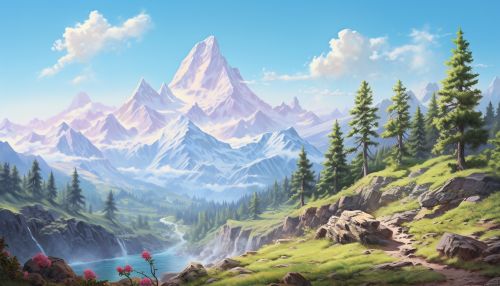The Science of Earths Surface Processes and Landform Evolution
Introduction
The science of Earth's surface processes and landform evolution, also known as geomorphology, is a multidisciplinary field that studies the physical features of the Earth's surface and the processes that shape them. This field integrates principles from geology, geophysics, climatology, and biology to understand the interactions between the Earth's surface and its environment.


Earth's Surface Processes
Weathering
Weathering is the breakdown of rocks, soils, and minerals at or near the Earth's surface. This process can be physical, such as freeze-thaw weathering, or chemical, such as oxidation. Weathering is a key process in the formation of soils and the shaping of landscapes.
Erosion
Erosion is the process by which soil and rock are removed from the Earth's surface by wind, water, or ice and then transported and deposited elsewhere. Erosion is a natural process but can be accelerated by human activities such as deforestation and agriculture.
Deposition
Deposition is the geological process in which sediments, soil, and rocks are added to a landform or land mass. This can occur through the action of wind, water, or ice. Deposition plays a crucial role in the formation of sedimentary rocks and the shaping of landforms.
Landform Evolution
Plate Tectonics
Plate tectonics is the theory that the Earth's lithosphere is divided into several large and small plates that move over the asthenosphere. This movement can lead to the creation, destruction, and transformation of landforms through processes such as mountain building, volcanic activity, and earthquakes.
Fluvial Processes
Fluvial processes refer to the processes associated with rivers and streams and the sediments they transport. These processes play a significant role in shaping the landscape by eroding, transporting, and depositing sediment.
Glacial Processes
Glacial processes involve the movement and transformation of landforms by glaciers. These processes can lead to the creation of distinctive landforms such as moraines, drumlins, and fjords.
Human Impact on Earth's Surface Processes and Landform Evolution
Humans have a significant impact on Earth's surface processes and landform evolution. Activities such as agriculture, deforestation, and urbanization can accelerate erosion and alter natural landscapes. Climate change, largely driven by human activities, also has a profound impact on these processes and the rate of landform evolution.
Conclusion
Understanding Earth's surface processes and landform evolution is crucial for many areas of science and society. It informs our understanding of natural hazards, climate change, and the distribution of natural resources. It also has practical applications in fields such as civil engineering, environmental management, and urban planning.
